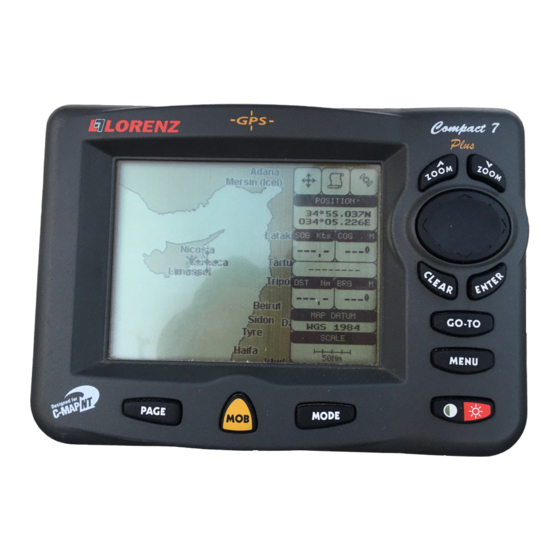
Table of Contents
Advertisement
Quick Links
MARINE ELECTRONICS
One Touch To Choose Your World
COMPACT 7 Plus
Gray Levels Chartplotter
with Internal GPS Receiver and Antenna
CODE: S3igLZ7m 1001c884/220305
EXCALIBUR 7 Speed
Gray Levels Chartplotter
with External GPS Receiver and Smart Antenna
CODE: S3egLZ7m 1001c884/220305
COMPACT 7 Sun Color
Sunlight Readable Display Color Chartplotter with Internal GPS Receiver and Antenna
CODE: S3igLZ7c 1001c844/220305
EXCALIBUR 7 Speed Sun Color
Sunlight Readable Display Color Chartplotterwith External GPS Receiver and Smart Antenna
CODE: S3egLZ7c 1001c844/220305
U
M
SER
ANUAL
Copyright 2005 LORENZ ELECTRONICS Italia.
All rights reserved. Printed in Italy. No part of this publication may be reproduced or distributed in any form or by any
means, or stored in a database or retrieval system, without prior written permission of the publisher.
Advertisement
Table of Contents




Need help?
Do you have a question about the Excalibur 7 Speed and is the answer not in the manual?
Questions and answers